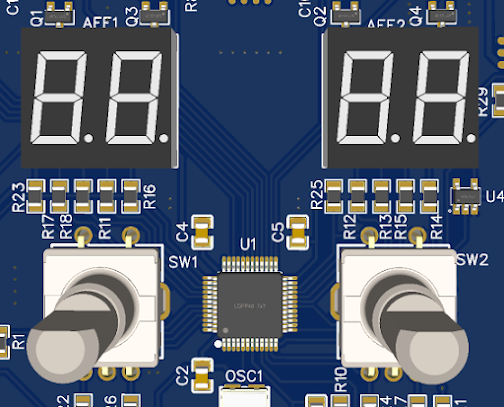After investigations of all kinds, still impossible to find an entry point on the non-functioning of this EMU 1, but...
Until now, I have taken the subject in a 'scientific' way. That is to say, by systematically controlling the operation of the processor. Despite the number of hours which is now starting to rise, not only do I not understand what is happening, but the result of what I observed really perplexes me!
Alas, must I say that I have now to move on to another study methodology: place to the artistic side of my brain!
And, as a result, I am forced to let my mind wander at its own pace, without really commanding it. I have no idea of the direction my ellucubrations will take. On the other hand, I think it will take some time...
So, and I can't really explain the entire thought pattern that I followed to arrive at the current result, but the fact remains that I finally arrived at the first result.
What is it about? I can get 'nothing' to run on the Z80 processor. Isn't it beautiful?
After many negative results, I tried to execute a NOP (No OPeration) loop on the entire ROM area of the system, with looping at address 0x0000.
Well this simple 'trick' didn't work. On the other hand, I was able to note with the logic analyzer the repetition of a value at regular intervals. Not the right value, and not the right tempo!!!
SO? Well I carried out some connection tests on the processor board, and I noticed that it does not correspond at all to the diagram that I was able to obtain for this board. So obviously, I'm not sure that the schematic I have corresponds to version 4 of my motherboard. But, even so, some connections are, how can I put it, baroque!
And at this stage, to ask the developers of this EMU 1 (if any is still alive): but why? To avoid copying the machine too simply? But no... It's of no use, except to stall 'some' time for anyone trying to troubleshoot an EMU 1 :-(
So, perhaps, in the context of the times (1982), it was probably not easy to find a personal computer capable of assembling Z80 code, encoding the result so that it could be properly executed by the Z80. But hey, that’s debatable. On the other hand, this makes it completely impossible to disassemble the PROM. But on the one hand, this doesn't fool anyone with Z80 experience, and then you 'just' have to find an EMU 1 and study the motherboard to find the 'trick'. That's what I did. And frankly, finding only one OUT statement in all the code is just not credible, and that set me off ;-)
In short, once I understood the 'false' problem, I coded the PROM correctly and inserted it into its socket on the EMU 1 processor board. And you know what? With the logic analyzer, I found the code 0xC3 (JUMP) at the regular interval of 1024 bytes. Which proves to me that, for the first time, this board is able to execute an empty loop correctly.
No but, frankly, EMU! :-(
Now I can turn to the four DMA circuits that equip this motherboard. In fact there are five, but only the four 'slaves' cause problems on the data bus when they are on their socket. I will focus on their operation because that is what my brain is now telling me to go and check. So....






